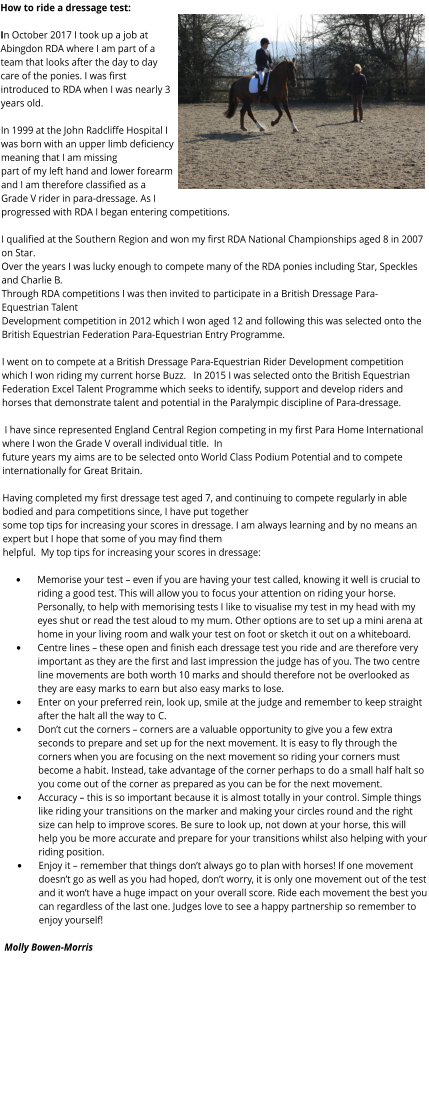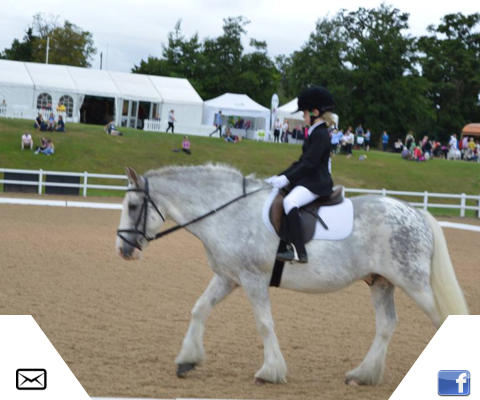

Registered Charity No. 1141360
(Please note our charity used to be known as Abingdon Group RDA with charity number 1074161, this charity ceased to exist in 2014 when it was replaced with the current incorporated form of RDA
Abingdon Ltd (with the charity number 1141360).
(A Group Member of the Riding for the Disabled Association incorporating Carriage Driving, Registered Company No 5010395, Registered Charity No, 244108)








This page is all about education. From time to time, we will add new resources. We welcome input from instructors, riders, or anyone else.
Questions: Can you fill in the blanks:
Poisonous plants - questions
Poisonous plants - answers
Thank you to the Blue Cross for providing the worksheets below:
Feet & Bridle - questions
Feet & Bridle - answers
Happy Horse - what makes a horse happy. Download a picture to illustrate.
Colouring - use the download above of pick a horse picture from here. See if you can colour the markings of your favourite RDA horse.
Here are links to pictures of some our horses to help you with their markings:
Bryn Candy Mr Brown Prin Malcolm Rosie Maple Speckles Ernie
You will notice that Bryn is stabled as a precaution. Do you know why? The answer is here.
Horse hazards - identify
Horse hazards - answers
RDA HQ resources
Grade 1 - Riding and Horse Care
Worksheet
Answers
Grade 2 - Riding and Horse Care
Worksheet
Answers
Grade 3 - Riding and Horse Care
Worksheet
Answers
https://www.countrysidegreetings.co.uk/pages/crosswords-free-to-do-download-print
https://www.horsesinsideout.com/shop - This link is good for volunteers, coaches and the older riders

© Abingdon RDA 2024







This page is all about education. From time to time, we will add new resources.
We welcome input from instructors, riders, or anyone else.
Questions: Can you fill in the blanks:
Poisonous plants - questions
Poisonous plants - answers
Thank you to the Blue Cross for providing the worksheets below:
Feet & Bridle - questions
Feet & Bridle - answers
Happy Horse - what makes a horse happy. Download a picture to illustrate.
Colouring - use the download above of pick a horse picture from here.
See if you can colour the markings of your favourite RDA horse.
Here are links to pictures of our horses to help you with their markings:
Here are links to pictures of some our horses to help you with their markings:
Bryn Candy Mr Brown Prin Malcolm Rosie Maple Speckles
Ernie Jasper You will notice that Marley has a rug on. Does anyone know why?
The answer is here.
You will notice that Bryn is stabled as a precaution. Do you know why?
The answer is here.
Horse hazards - identify
Horse hazards - answers
RDA HQ resources
Grade 1 - Riding and Horse Care
Worksheet
Answers
Grade 2 - Riding and Horse Care
Worksheet
Answers
Grade 3 - Riding and Horse Care
Worksheet
Answers
***************************************************
https://www.countrysidegreetings.co.uk/pages/crosswords-free-to-do-download-print
https://www.horsesinsideout.com/shop - This link is good for volunteers, coaches
and the older rider
***************************************************























